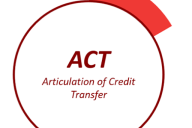You have /5 articles left.
Sign up for a free account or log in.
The New England Transfer Guarantee (NETG) is an innovative initiative that aims to simplify the transfer process for associate degree–holding students in New England. Students who graduate from an eligible community college are guaranteed admission to participating four-year schools in the same state, provided they meet a minimum grade point average set by the institution. First launched by the New England Board of Higher Education (NEBHE) in the spring of 2021, the initiative has proven itself to be effective in its goals of streamlining the admissions process and clarifying the options available to eligible community college graduates. By removing barriers to transfer, this program empowers students to achieve their academic aspirations and contributes to higher levels of educational attainment in the region.
Each year, the four-year institutions that participate in NETG commit to securely submitting de-identified student data to NEBHE to be combined and analyzed. The purpose of this annual data collection is to quantitatively assess the program’s performance in serving students who transfer through it and to identify trends across states and over time. As our team works to analyze the third full year of enrollment data (which covers academic year 2023–24), we are thrilled to see that more students than ever before are taking advantage of the opportunities created by the New England Transfer Guarantee. As of the last academic year, over 1,300 students across three states (Connecticut, Massachusetts and Rhode Island) have transferred from a community college to a four-year school via NETG since the initiative’s inception in 2021.
The implementation of NETG was made possible by the generous support of the Teagle Foundation and the Davis Educational Foundation. In July 2022, the Arthur Vining Davis Foundations and the Balfour Foundation joined Teagle and DEF to support NEBHE in scaling the NETG to the northern New England states of Maine, New Hampshire and Vermont. As of spring 2025, the New England Transfer Guarantee is fully operationalized with memorandums of agreement signed by 52 public and private, nonprofit institutions across six states.
With the grant-funded implementation phase of this work coming to a close in December 2025, NEBHE plans to publish two enrollment reports before the end of the calendar year—the first will look at southern New England’s data from the 2023–24 academic year, and the second will incorporate data from all six New England states for the first time.
As NEBHE works to analyze data that will be published in our Third Annual Enrollment Report, we are excited to share some key insights:
- Total Guarantee enrollment increased by 73 percent across Connecticut, Massachusetts, and Rhode Island. With 576 unique students transferring through the initiative last year, institutions reported their highest Guarantee enrollment numbers yet. Connecticut saw the most significant jump, with 201 students enrolling in the 2023–24 academic year, representing a 100 percent increase from the prior academic year.
- Guarantee students are succeeding at their transfer destinations. The average community college GPA at the time of transfer was 3.27, well above a 3.0, which is the highest threshold a participating institution can set for guaranteed admission through the program. Furthermore, the average GPA post-transfer was 3.38, demonstrating that students are maintaining a high level of academic standing at their transfer destinations.
- Students participating in the Guarantee are achieving baccalaureate completion. Since the initiative’s inception, over 300 students have graduated from a four-year school after transferring through the New England Transfer Guarantee. We are also encouraged to see a low rate of withdrawal (6.7 percent) among NETG students, which signals that the vast majority of participating students are staying in coursework post-transfer and therefore staying on track to obtaining a bachelor’s degree.
- Low-income students are taking advantage of the NETG. Among Guarantee students, 47.5 percent receive Pell Grants, which classifies them as low income. This is significantly higher than the statewide percentages of students receiving Pell Grants at independent institutions in Connecticut, Massachusetts and Rhode Island, which are 22 percent, 18.7 percent and 19.3 percent, respectively. In Connecticut, over 50 percent of students who have transferred through this program are Pell Grant recipients.
The data points above are merely a sample of the findings obtained from our analysis. The Third Annual Guarantee Enrollment Report will contain a more thorough overview of the regional data, as well as a state-by-state breakdown of enrollment numbers. Additionally, we look forward to the publication of this year’s second report, which will include new annual data from the three states featured in the third annual report as well as inaugural annual data from Maine, New Hampshire and Vermont.
As we work to increase awareness of the opportunities available through the Guarantee among students, families and advisers, we hope to see even more students across the region benefit. In the coming months, NEBHE will be working with leaders from participating institutions to develop a long-term governance structure to oversee the continued success of this initiative beyond the life of the grant, ensuring that transfer pathways remain clear, accessible and supportive of all students’ educational goals.


